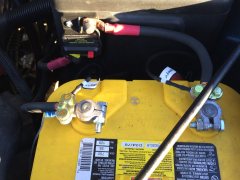Since the original topic was concerning the Blue Sea ACR battery separator, I thought I would post a brief correspondence I had with Blue Sea this past week. Their response is first, followed by my question. Probably old news to most, but new to me:
Thank you for the question. The set point is 13.0 VDC on our ACR. 12.9 on your meter is very close and within tolerances of both meters. So it would be typical for the ACR to combine at these voltages. If it drops even just a tiny bit I am sure it will disconnect.
Please ask if you have any additional questions.
Best Regards,
Blue Sea Systems Tech Support
Subject: Tech Support - 7622 - Small current goes from house to starting battery when engine not running.
Tech support query concerning PN 7622
Small current goes from house to starting battery when engine not running.
When the house battery resting voltage is above the starting battery resting voltage, the unit connects the 2 batteries and allows a small trickle (0.6 Amps) to go to the starting battery. Is this normal when set on auto?
Yesterday, the house battery was at 90% charge (12.9 V) and the starting battery was at 12.64 Volts. When set on "auto" it connected the 2 allowing 0.6 Amps from house to starting battery. I can manually put the switch to "off", but should that be necessary when on "auto"?
Otherwise, when engine is running, the engine battery is at 13.9 volts and current goes to the house battery.




















